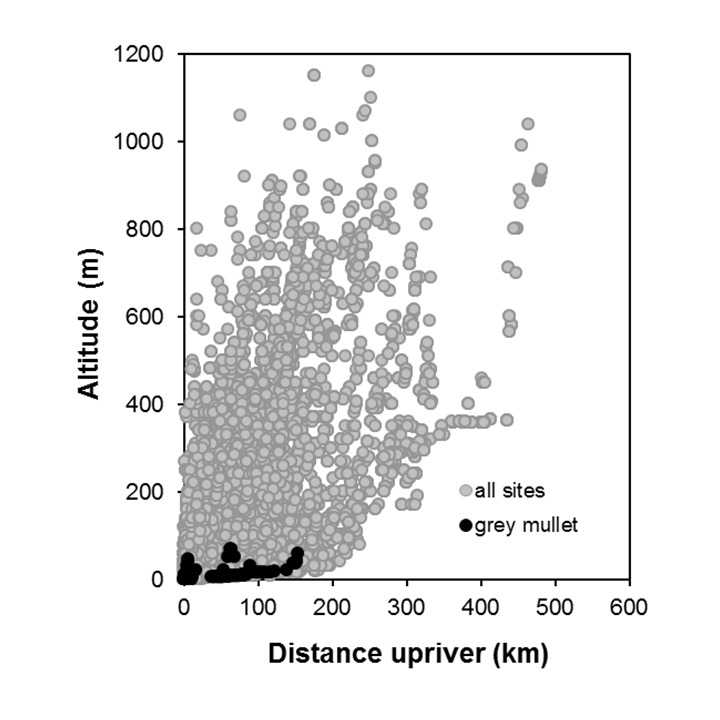Grey mullet
Mugil cephalus (Linnaeus, 1758)

The grey mullet is the second member of the Mugilidae (or mullet) family found in New Zealand. In common with the yelloweyed mullet , the grey mullet has two dorsal fins, the first being tall and with four obvious spines. They also have large, easily dislodged scales. Technically, the way to tell the two species apart relies on the presence of the thick fleshy adipose eyelid found on the grey mullet. However, grey mullets also lack the bright yellow eye found on the appropriately named yelloweyed mullet.
Grey mullet have a worldwide distribution and New Zealand is at the southern limit of their range. Hence, they are mainly found in the North Island, and only in the Cook Strait area during the summer months. Although primarily a marine species, grey mullet will penetrate considerable distances upstream. In the Waikato River they are found as far inland as Karapiro Dam and travel up the neighbouring Waipa River to Te Kuiti. However like the yelloweyed mullet, they must return to the sea to spawn.
Grey mullet feed on detritus and plant material that they suck from the substrate. They are also known to feed by grazing the surfaces of aquatic plants. Grey mullet are large fish, commonly reaching 500 mm in length. They are regarded as a valuable food fish, and are particularly nice smoked because of the oily flesh. In many parts of the world they are farmed commercially, but in New Zealand most of the commercial catch comes from fishers operating on Kaipara and Manukau Harbour and in the lower reaches of the Waikato River. Tagging studies of grey mullet in this area showed that there was considerable movement of fish between the river and harbours, and that commercial and recreation fishers extracted a significant proportion of the grey mullet population.
![Grey mullet - distribution maps [2024]](/sites/default/files/styles/large/public/2024-02/Grey%20mullet.jpeg?itok=yYjdwso6)

